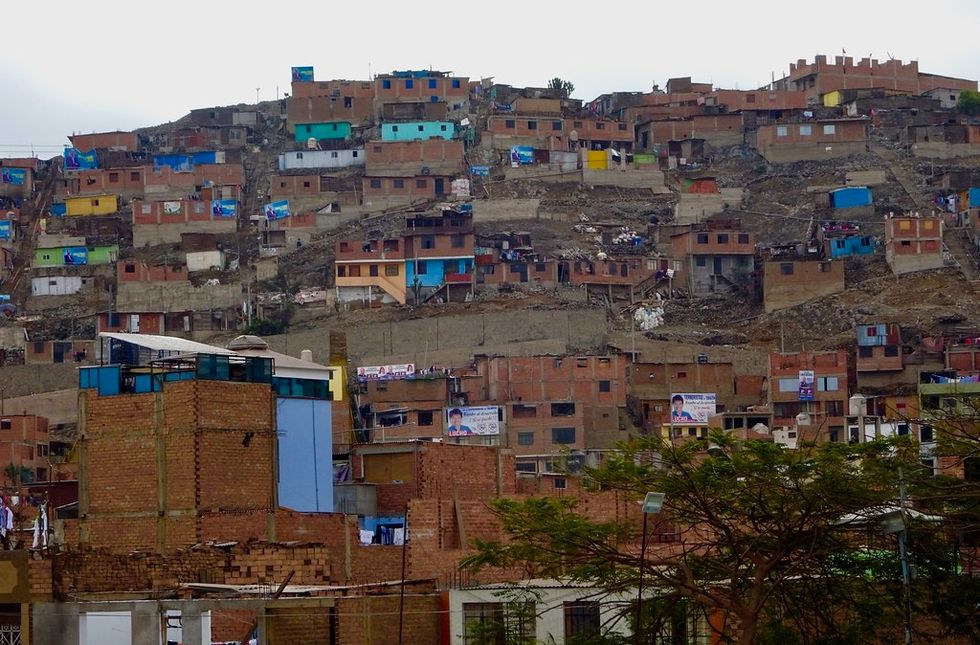The square facade resembled a single-family house with two wrought iron gates, and one arched black door, no larger than the width of two people. The neighboring houses, like most houses in Latinoamerica, were joined to its side exterior walls. Half of the front was painted in blue while the other half remained as untouched cement; however, as soon as someone stepped inside, a roofless "t" shaped alley opened up and three independent buildings emerged. Two of them were located at the sides and the last one at the bottom end, beside a granite sink. Each construction was different from the other, the one at the left was two floors, made of orange bricks with small concrete lumps protruding from the walls. It had two doors on the first floor and two windows on the second. There my grandfather had his own workshop, a place filled with cardboard, pieces of wood, and cloth. The construction at the right had the same structure, exempted from the fact that the walls had been grinded with cement a long time ago. I remember how as a child, I would go and draw on the gray surface with white chalk, splash water balloons on it and watch how they created slender and amorphous figures.
At night the stairs rumbled as if someone in one of the twenty rooms was playing a "Cajon" at a constant speed and rhythm. The sound of footsteps across the seventy-foot hallway could be heard all around the house, echoing as soft whispers. I never thought the house's structure was unusual. I had grown accustomed to the sounds of people walking around, and to the smell of oranges and other critics that came from one of the rooms, my grandfather rented to a street fruit seller. The tenants were kind to me, and I really liked the feeling of community inside the house, the tenants appreciated my family for they have known each other for many years. Some of them were even invited to my birthday party when I turned one. They knew my sister and I and kept an eye on us when my parents had to leave the house.
My sister says that she used to tell her friends that our house was a castle. She described the two first buildings like town halls meant to protect the last and most beautiful of all three buildings. It was a wine and white European architecture. It was a floor higher than the others. Its front doors were made of wood varnished in a reddish-brown color, and a pair of luminescent lamps hung from its sides. It had wide sliding windows and a creamed tiled floor. We lived in a low-income neighborhood and houses like this were scarcely seen around. However, my parents, my sister, and I did not live there. The whole terrain had been divided into my grandfather's children, and my mom's side was the cemented building. We lived on the first floor and rented the rooms on the second floor in order to pay my parent's debts. The place was small, but as a child, I loved the idea of all of us sleeping in a single bedroom.
Now that I think back on it, the appearance of the house was not at the very least something that people would consider attractive, but for me and my sister, it was.
We preferred playing out in my grandfather's workshop and stealing a pair of his cardboards in order to construct a fortress in the middle of the roofless hallway. During summer we would draw spots with chalk over the cemented building wall and play to hit the exact spot with water balloons. We liked to explore the house even though we had done it many times before. It was not a castle, but it brought us happiness because that's how kids are, they find happiness in things that seem nonsensical. Their imagination allows them to see castles where the adults see problems and unfinished houses.








































